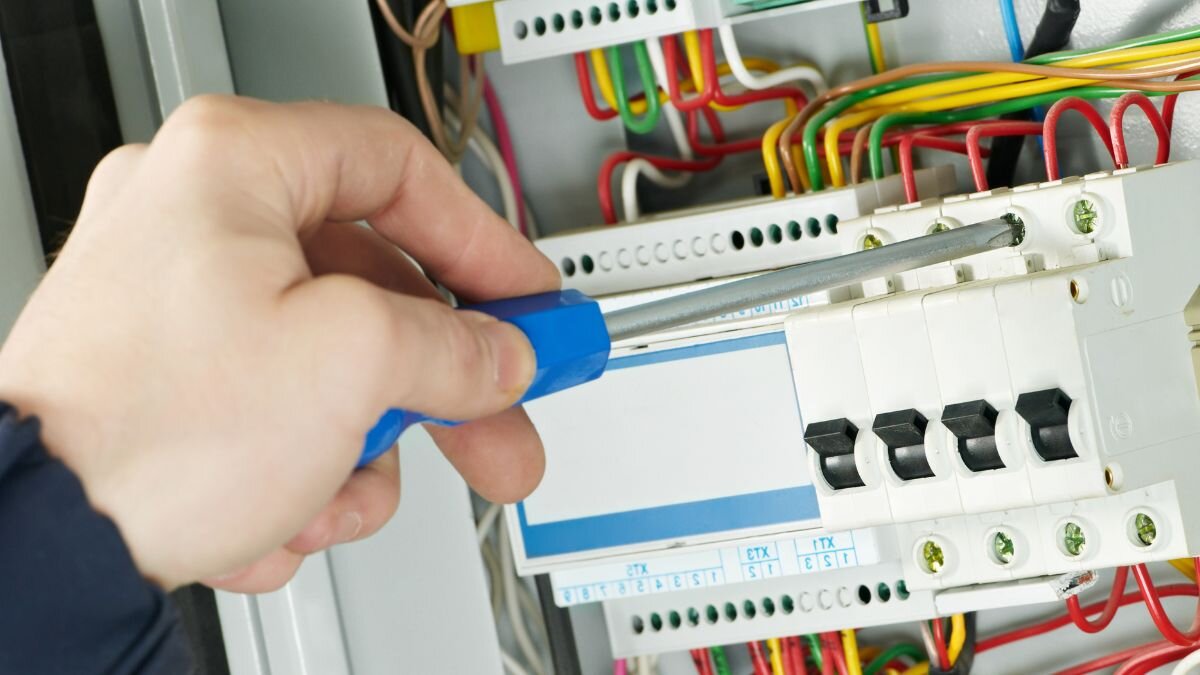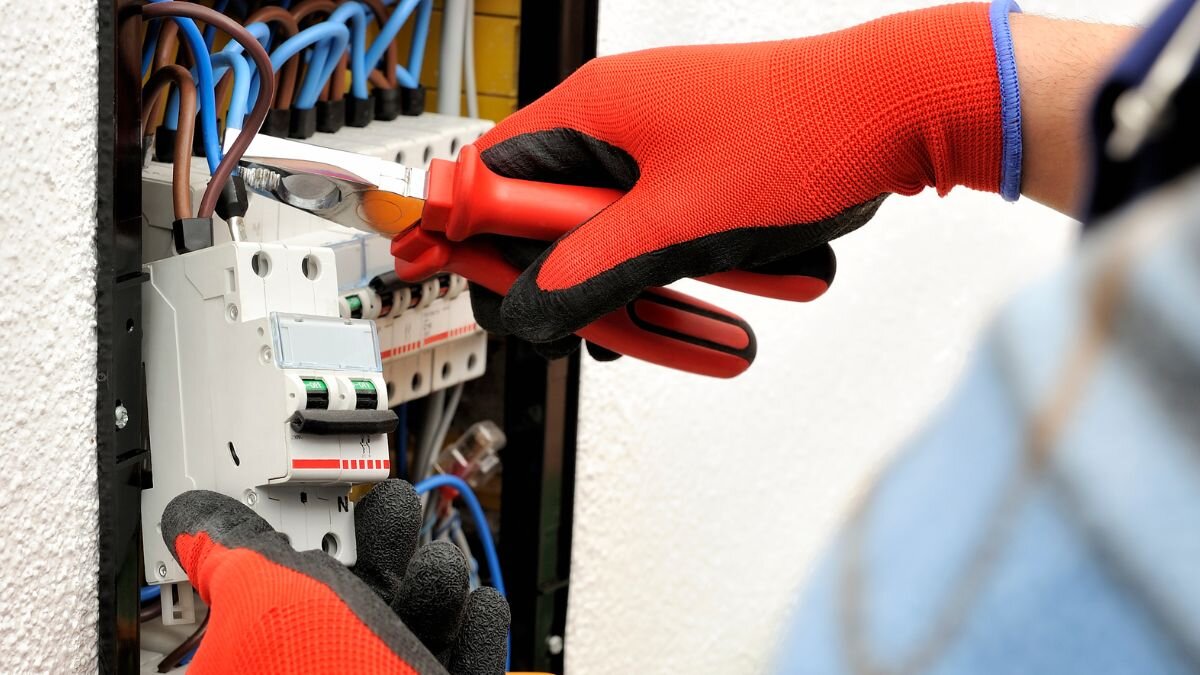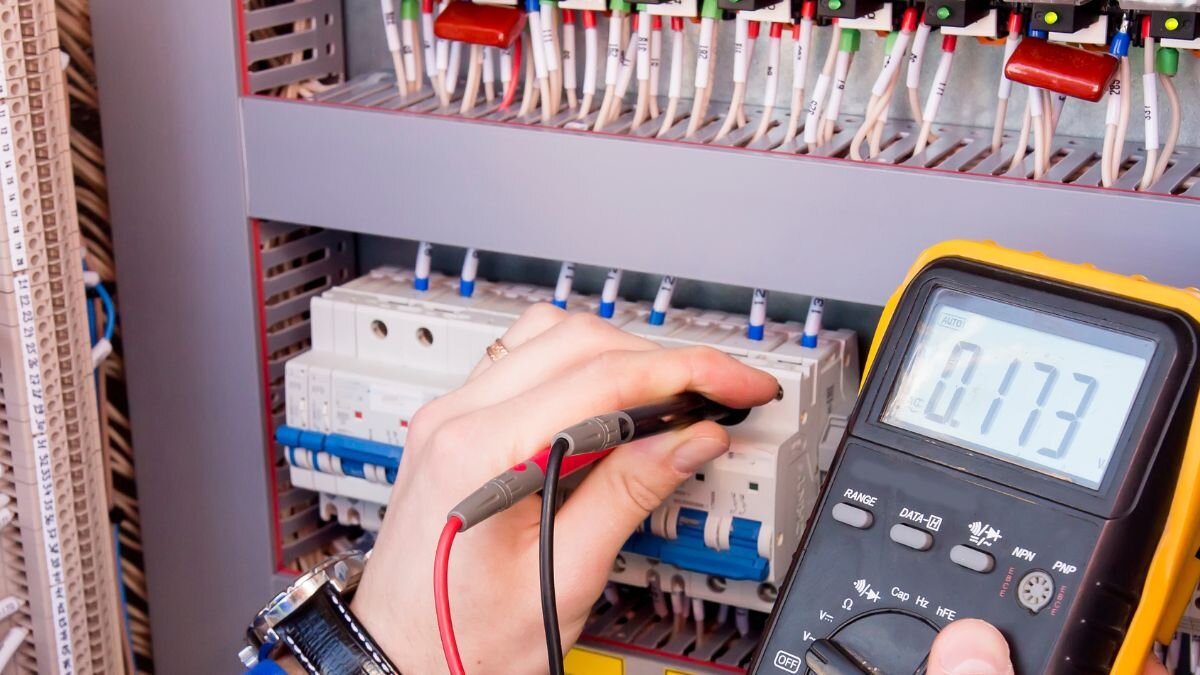Residential 3-Phase Power Supply
Discover the advantages of switching to a residential 3-phase power supply. This guide covers the benefits, potential cost savings, and how it can improve your home’s electrical efficiency. Find out if this upgrade is the right choice for you.
Australia’s electricity demands are on the rise. According to the Australian Government’s Department of Climate Change, Energy, the Environment and Water, total electricity generation in 2021-22 jumped 2% to a whopping 272 TWh (978 PJ). This surge is likely fueled by a combination of factors, including increasingly hot summers prompting air conditioner use and cooler winters driving reliance on heating. As our energy needs evolve, so too must our power supply solutions. This is where three-phase power enters the picture.
Once a staple for industrial giants, this technology is now gaining traction in residential settings, promising to revolutionise how we power our homes.
What is a 3-Phase Power Supply?
A three-phase power supply is a common method for distributing electrical power using three alternating currents. Each current, or phase, is separated by 120 degrees, providing a constant power transfer that is more efficient than single-phase power.
Three-phase power differs from single-phase power in several ways. Single-phase systems use only two wires: a phase wire and a neutral wire. In contrast, three-phase systems use three wires and sometimes a fourth wire (the neutral). Single-phase power sources deliver power using a single alternating current, leading to peak and trough cycles that can cause fluctuations. Conversely, a three-phase power connection offers a constant voltage and constant power, reducing flicker and providing more power.
In residential settings, a three-phase power system usually involves three-phase power supplies distributed through electricity distributors. Homes typically use single-phase AC power for all appliances, but larger homes or those with three-phase equipment like three-phase motors might require a three-phase supply. This setup involves four wires—three phases and one neutral wire—to the electricity meter.

Three-phase power systems can be configured in either a wye configuration (with a neutral) or a delta configuration. Due to its efficiency and ability to handle higher voltages, three-phase power is ideal for electric motors, lighting, space heating, and vehicles. It also uses less conductor material, lowering costs.
Three-phase supplies are preferred for electric grids, transmission lines, and data centres. Phase converters can convert single-phase sources to three-phase, enabling the use of three-phase motors and other three-phase systems. Additionally, three-phase power supplies provide better fault protection and speed control for electric motors.
Benefits of 3-Phase Power Supply for Homes
A three-phase power supply offers numerous advantages over single-phase power for residential use. Below, we explore the key benefits.
Enhanced Efficiency
Three-phase power leads to more efficient electricity usage compared to single-phase systems. In a three-phase system, the electrical power is distributed across three wires, each carrying an alternating current that is out of phase by 120 degrees.
This configuration ensures a constant power flow, reducing energy losses. Unlike single-phase AC power, which can experience fluctuations, three-phase power supplies maintain a steady voltage, enhancing the efficiency of appliances and reducing the stress on the power circuit.
Better for High-Powered Appliances
Three-phase power is ideal for high-powered appliances such as air conditioners, electric car chargers, and pool pumps. These devices require more power than single-phase power sources can efficiently provide. With a three-phase power connection, these appliances can operate smoothly without overloading the power wire.
Additionally, three-phase motors used in these appliances can run more efficiently, providing the same power with less energy consumption. This is particularly beneficial in homes with large energy demands, ensuring that electrical power is delivered consistently.
Improved Electrical Stability
A three-phase power supply improves electrical stability in households. The balanced load across the three wires and the neutral wire reduces the likelihood of power dips and outages. Unlike single-phase systems, where the entire load is on one line, three-phase systems distribute the load evenly, enhancing stability. The presence of a fourth wire (neutral) in three-phase power systems also provides an additional layer of safety and stability. This reduces the risk of peak current spikes that can cause damage to appliances and rotating components.
Cost Implications
The difference between single-phase and three-phase power also extends to cost implications. Over time, a three-phase power supply can lead to lower energy bills. This is due to the more efficient transfer power process and reduced energy losses.
Three-phase systems use less conductor material and can carry current more effectively, which can lower installation and maintenance costs. In addition, 3-phase power can handle higher loads without requiring upgrades to the main switch or power supply infrastructure, leading to long-term savings.
Potential Drawbacks to Consider
While a three-phase power supply offers numerous benefits, there are some potential drawbacks to consider before making the switch from single-phase power.
Higher Initial Installation Costs
Upgrading to a three-phase power supply can be expensive. The installation of a three-phase system typically requires upgrading the electricity meter, phase wire, and neutral wire, as well as other components of the power circuit.
This process can be cost-intensive compared to maintaining a single-phase power source. Additionally, the need for specialised equipment and the involvement of qualified electricians further increase the initial costs.
Compatibility Issues
Compatibility with existing electrical appliances and systems is another concern. Many homes are designed with single-phase power in mind, meaning that all your appliances may not be compatible with 3 phase power.
Appliances designed for single-phase power sources might require phase converters to work with a three-phase power supply, adding to the complexity and cost.
What’s more, some older appliances and systems may not support the higher power demands of a three-phase motor, leading to potential compatibility issues that could necessitate the replacement or modification of existing equipment.
Maintenance and Repair
Maintenance and repair of a three-phase system can be more complex and costly than those of a single-phase system. The additional components and the need for specialised knowledge mean that repairs often require the expertise of qualified professionals.
Three-phase power supplies involve only three wires and one neutral wire, but the complexity of the power wire configurations and the electricity supply infrastructure can lead to higher maintenance costs. Issues with energy storage and the electricity distributor can also complicate repairs, potentially leading to longer downtimes and higher expenses.
Comparing 3-Phase and Single-Phase Power Supply
Understanding the differences between single-phase and 3-phase power is crucial for choosing the right electricity supply for your home. Below is a detailed comparison and typical use cases for each type.

Side-by-Side Comparison
Aspect | Single Phase Power | 3 Phase Power |
Power Delivery | Uses one phase power wire and one neutral wire | Uses three-phase power wires and one neutral wire |
Voltage Stability | More prone to voltage drops and peaks | Provides consistent and balanced voltage |
Power Efficiency | Less efficient for high-power applications | More efficient and can deliver as much power as needed |
Installation Cost | Lower initial installation costs | Higher initial installation costs |
Maintenance | Simpler and cheaper to maintain | More complex and potentially more costly |
Use of Conductors | Requires more conductor material for the same power | Uses less conductor material for higher power |
Common Applications | Electric lighting, small household appliances | Electric vehicles, heavy machinery, large air conditioners |
Electricity Supply | Standard for most residential homes | Preferred for industrial and large residential use |
Use Cases
Single Phase Power:
- Single-phase power is ideal for most standard residential homes. It efficiently powers electric lighting, small household appliances, and other low-energy devices.
- Homes relying on a single-phase source typically have lower overall power demands and do not require the high efficiency and stability provided by 3 phase power.
- Simplified example: A small home with basic electrical needs, like lighting, television, and standard kitchen appliances, would benefit from single-phase power due to its lower installation and maintenance costs.
3 Phase Power:
- 3 phase power is best suited for homes with high power demands, such as those with electric vehicles, large air conditioning systems, or heavy-duty appliances.
- Homes that use 3-phase power benefit from more stable voltage and efficient power delivery, which is essential for running high-power equipment smoothly.
- Simplified example: A large home with multiple high-power devices, such as an electric vehicle charger, pool pump, and central air conditioning, would benefit from 3-phase power due to its ability to deliver as much power as needed without significant voltage drops.
How to Determine If 3-Phase Power Supply is Right for Your Home
Deciding between a single-phase and three-phase power supply depends on various factors, including current and future electrical demands. Below are guidelines to help make this determination.
Assessing Electrical Needs
To evaluate if 3-phase power is necessary, start by assessing your current and future electrical needs. List all your appliances and their power requirements. High-powered appliances like air conditioners, electric ovens, and electric vehicle chargers can consume significant energy.
Consider future plans, such as adding a home office or electric car, which would increase your power demands. Understanding the difference between single-phase and three-phase power can help you predict whether your home will benefit from the increased efficiency and capacity of 3 phase power.
Home Evaluation
Evaluate your home based on its size and the number of high-powered appliances. Larger homes with more extensive electrical systems are more likely to benefit from 3-phase power. If your home has multiple high-demand appliances, such as a central air conditioning system, pool pumps, or electric vehicle chargers, 3-phase power might be necessary to avoid overloading a one-phase system.
Future plans, like adding a workshop or a home office with high-powered equipment, should also be considered. A two-phase system might not suffice for these needs, making 3 phase power a more suitable option.
Professional Assessment
Consulting with a professional electrician is crucial for an accurate assessment. An electrician can evaluate your current setup, considering the square root of the power requirements to determine the best power supply.
They can differentiate between single-phase and three-phase systems and recommend whether upgrading to a three-phase supply is necessary. A professional can also explain the technical aspects, such as why the one-phase or two-phase configurations might be insufficient for your home’s power demands.
Steps to Upgrade to a 3-Phase Power Supply
Upgrading to a 3-phase power supply involves several key steps. Here’s an overview of the process.

Initial Consultation
The first step is to contact a professional electrician for an initial evaluation. During this consultation, the electrician will assess your current one phase or two phase system, evaluate your electrical needs, and determine if a 3 phase upgrade is feasible. They will consider the difference between single phase and three phase systems and provide recommendations based on your specific requirements.
Planning and Permits
Once the initial evaluation is complete, the planning phase begins. This involves creating a detailed plan for the upgrade, including the layout of the new 3-phase system and the placement of the phase wires and other components.
You will need to obtain the necessary permits from local authorities, which can vary depending on your location. The electrician will often assist in this process, ensuring all legal and safety requirements are met.
Installation Process
The installation process involves several steps and can take a few days to complete. The electrician will replace or upgrade your electricity meter, install the three phase wiring, and connect the neutral wire and phase wires to the main power supply.
They will also ensure that all high-powered appliances are properly connected to the new system. The timeline for installation can vary depending on the complexity of the upgrade and the specific requirements of your home.
Upgrade Your Power Supply with Sydney Level 2 Electricians
Upgrading to a 3-phase power supply involves evaluating current and future electrical needs, considering the home’s size and high-powered appliances, and consulting with a professional electrician for an accurate assessment.
The process includes an initial consultation, planning and obtaining necessary permits, and the installation of the new system. 3 phase power offers a more efficient and stable electricity supply, which is beneficial for homes with high power demands from appliances like electric vehicles and central air conditioning systems.
Whether upgrading to a 3-phase power supply is worth it depends on the homeowner’s specific needs. For smaller homes with standard electrical demands, a single-phase system is often sufficient and cost-effective. However, larger homes or those with future plans for high-powered appliances may benefit significantly from the stability and efficiency of 3-phase power.
To ensure a smooth and professional 3-phase power supply upgrade, speak with our Sydney Level 2 Electricians team now. Their expertise and commitment to providing reliable and efficient power solutions make them the ideal choice for handling electricity supply upgrades. They can offer tailored advice and services, ensuring your home meets all electrical requirements effectively.